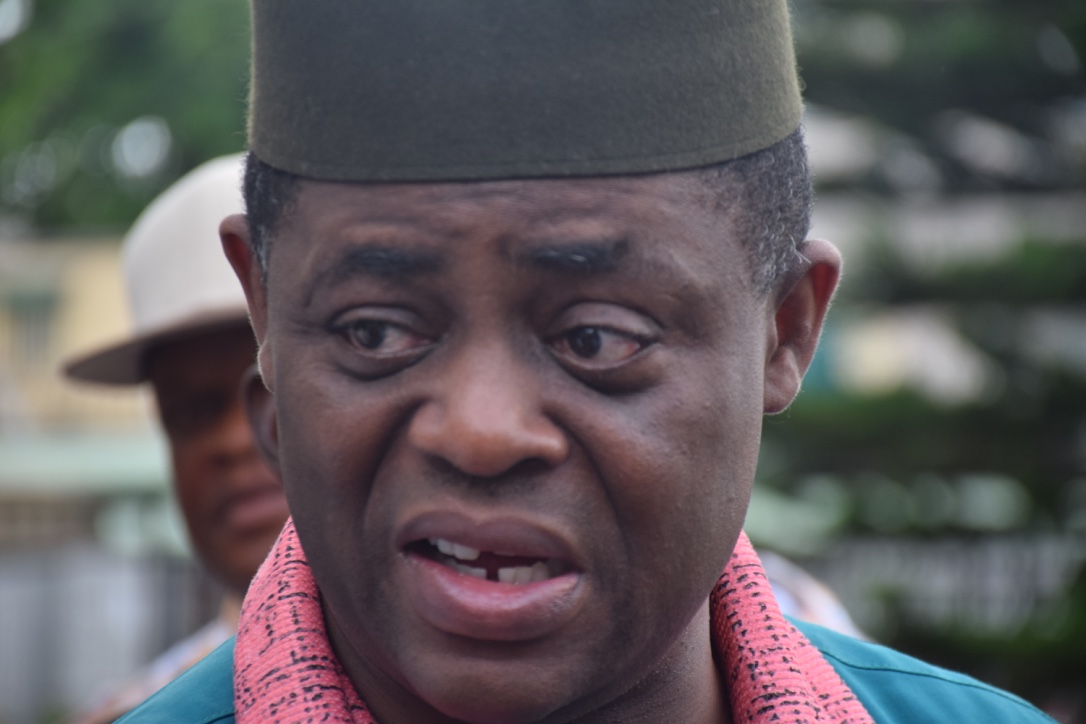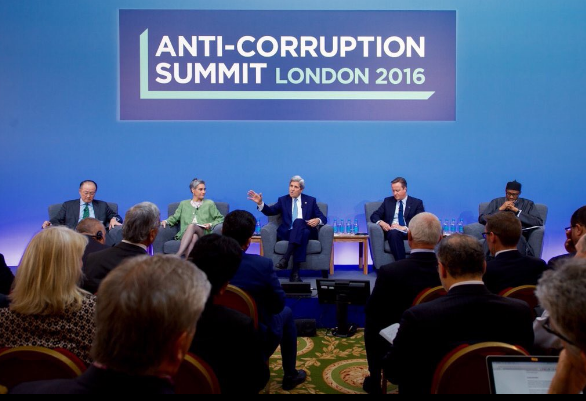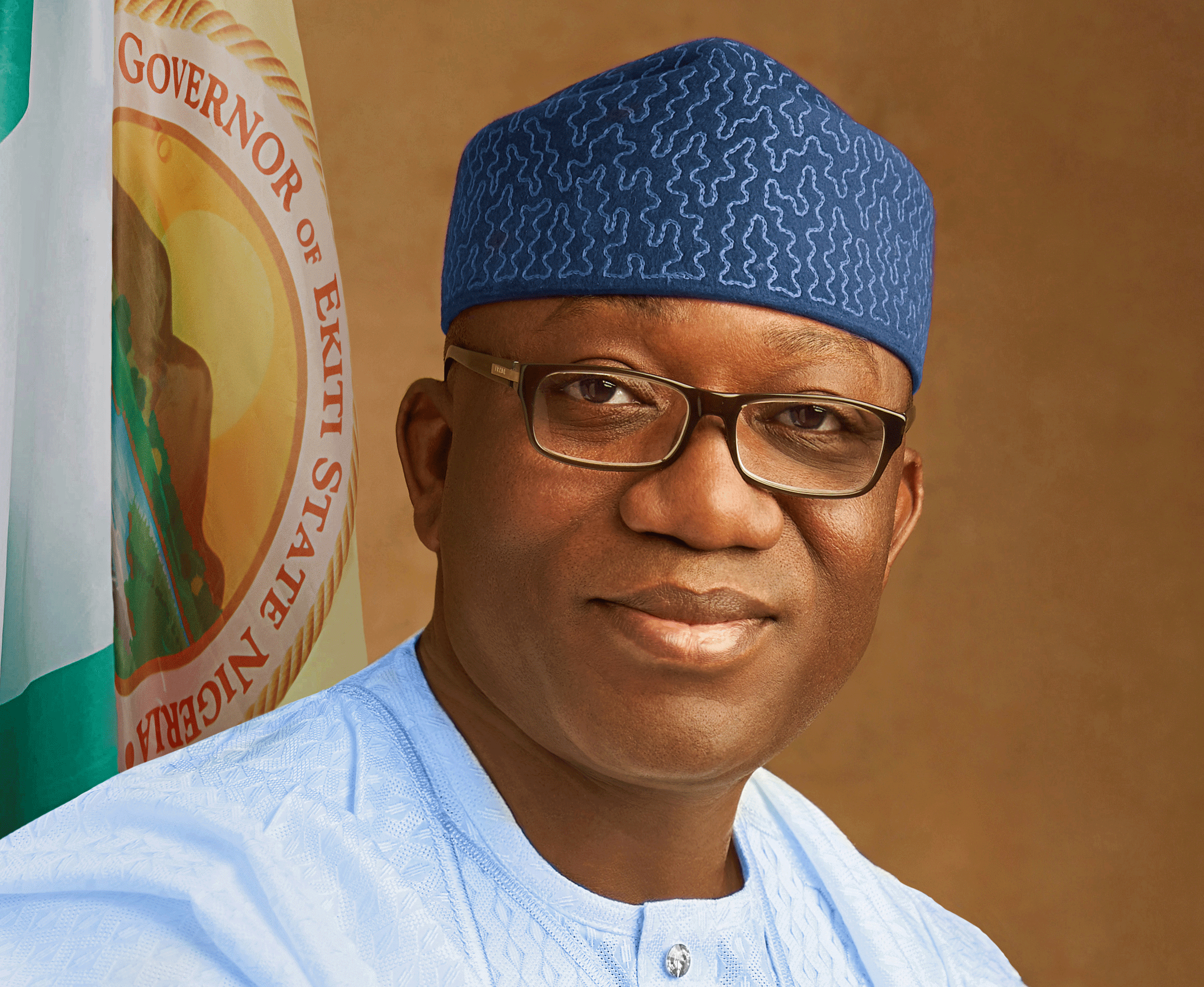BY OLAWALE OGUNDANA
Following the recent notification provided by Nigerian Electricity Regulatory Commission (NERC) that there would be increases in tariffs from April 2020, there has understandably been a lot of discussion on the subject. My perspective is to seek a path forward that ensures we wouldn’t repeat this conversation again in the context of inadequate power supply in another 5 years, and in another 10 years. Price will always be debated between service providers and customers. It is however preferable that the country makes appreciable progress between those periodic debates.
Nigeria is currently in a vicious circle that raises the possibility that we will not have adequate grid supply of electricity in the next 50 years. This vicious circle which began at least since 2006 (14 years ago) runs in the following steps.
• The electricity sector cannot pay in full for the gas it receives, or for the equipment upgrades it needs to increase efficiency. The government promises to bridge the tariff gap, but the funding is delayed at best. The industry continues to struggle.
Advertisement
• Investors are not encouraged to invest in the additional capacity needed to increase electricity and gas supply because they aren’t assured of reliable returns on investment.
• Local industries struggle to compete with imports or to export manufactured or processed goods due to the high costs of alternative fuels such as diesel. Companies that need reliable power supply build factories in neighboring countries to supply goods to the Nigerian market. Nigerians lose jobs and their purchasing power declines.
• The Naira devalues due to the lack of substantial sources of foreign exchange apart from crude exports and diaspora remittances (two sources of foreign exchange that do not require the participation of 99% of Nigerian residents).
Advertisement
• The electricity industry becomes less viable because the price of gas is generally based on a contracted dollar value while electricity is sold in Naira.
• The absence of jobs worsens the security situation in the country and consequently increases the cost of developing gas fields and building infrastructure.
• Some of the cheapest sources of gas in Nigeria are developed for export, leaving the more expensive fields for domestic development. This would imply that even in dollar terms, the breakeven gas price required to grow capacity in future rises.
• The industry campaigns for another round of tariff increases – but this time, it is only enough to get us back to square one – not to make the industry profitable, but to minimize losses.
Advertisement
OBSERVATION
Before I make suggestions, I would like to make some observations many Nigerians will agree with, and some which may be news to many.
• Most countries whose economies are to be reckoned with on the planet generate above 2,000 KwH of electricity per person per year (per capita). This is a low threshold (C minus grade for power supply). For example, the corresponding generation numbers for South Africa and the US in 2018 were about 4,430 KwH per capita and 13,638 KwH per capita respectively. The corresponding number for Nigeria in 2018 was about 170 KwH per capita (9% of the C minus level). The severity of the shortfall is not news to Nigerians.
• No matter how efficiently the current power generation (Gencos) and distribution companies (Discos) are run, we will not have adequate power in Nigeria if no new investments are made to increase power generation and gas (or other fuel) supply capacity.
Advertisement
• Assuming a generous (given the mix of gas turbines and hydro) capacity factor of 70%, we will require about 65,000 MW (65 GW) of generating capacity to supply 2,000 KwH to each of 200 million Nigeriansin one year. Note that this pretends that Nigeria’s population does not grow. Based on actual electricity generation growth rates (maximum 8%) achieved by other countries, we are unlikely to attain this level in less than 20 years, even if we start doing everything correctly now.
• Assuming Nigeria already has 15,000 MW (15 GW) of capacity (including the upcoming Mambila Hydroelectric Plant), we need either the government or investors to build the remaining 50 Gigawatts (GW). Assuming a typical estimate of $1,000,000 per MW for Combined Cycle Gas Turbine (CCGT) power plants, somebody will need to invest about $50B in power plants alone. In addition, assuming the more efficient CCGT plants, investors will also need to invest in gas production, processing and pipeline facilities to enable new supply of about 6.5 Billion Cubic Feet per Day (BCFD). Estimates would vary depending on the specific gas resources, but this new supply capacity is unlikely to cost less than $30 billion. Let us ignore the investments required in transmission and distribution. This brings the total investment required to bring us to a C minus grade in power supply to about $80 billion.
Advertisement
• The federal government’s 2020 capital expenditure budget is N2.46 trillion (about $8 billion) which includes other infrastructure priorities (railway, roads, etc.). The capital expenditure budget allocated to the Federal Ministry of Power is N129 billion ($0.4 billion). It is therefore clear that the government does not have the funds required to meet the minimum power requirements of the country.
• This implies that if Nigerians are to enjoy any degree of stable power supply by 2040, private investors will need to find the sector attractive in 2020. If private investors stay away, we will be repeating the ongoing discussions in 2030.
Advertisement
• As Nigerians know, an economy cannot grow rapidly without considerable growth in electricity supply. It will not happen. Imports will undercut your sales. Diesel costs will erode your profits. Your costs will increase to a point where customers cannot afford your goods. Nigerians have experienced all of these. It is also true that there are other essential ingredients for growth, such as good transportation.
• If there is such a large shortfall in power generation in Nigeria, rational investors should be scrambling to fill the supply gap. If they aren’t, there must either be bottlenecks or serious risks associated with investment. If you believe you have offered investors a good price and they aren’t stepping forward, they are either uncomfortable with the price or the risks. You will need to step in and address one or both of those challenges.
Advertisement
• Not all gas fields are created equal. Several characteristics drive the profitability of the field and the minimum price that gas can profitably be sold. For example, in a large gas field a given amount of capital can develop a larger volume of gas, thereby reducing the unit development cost. In addition, a gas field that is rich in condensates can make a lot of revenues from the condensates and make the operator less sensitive to the gas price. In these two scenarios, the gas can be sold at a lower price. In general, fields on land are cheaper to develop than fields in deep water. On the other hand, a small gas field that is lean in condensates and in an offshore location may require a higher gas price. Fixing the gas price rather than allowing the market to find the equilibrium price can render many potential gas developments unprofitable. Nigeria does not have 200 Trillion Cubic Feet (TCF) of reserves at $2.50 per MMBtu. We may however have enough for our present needs.
• Gas prices also reflect the cost of the infrastructure required to bring it to market. The countries that never have a shortage are the countries that are willing to pay whatever premiums are necessary to get the gas. These premiums have always incentivized investors and unlocked new supplies. For example, even though the price of gas in the US is about $2.00 per MMBtu today, it averaged almost $9.00 per MMBtu in 2005 and 2008. No wonder the shale gas revolution originated in the US. • Countries that have substantial gas infrastructure investments ahead of them should expect gas prices to include both development and infrastructure costs (such as pipelines). After the infrastructure investments have been recovered, it is easier for gas prices to come down.
• It is interesting that countries that are willing to pay market price for gas always have a supply adequacy including supply of liquefied gas from countries such as Nigeria. Nigeria on the other hand limits the gas price and has a shortage even though she has gas reserves! It isn’t that Nigeria exports too much gas. Rather, Nigeria leaves too much gas in the ground that could go to domestic supply.
• The commercial sector in Nigeria is willing and able to pay $3.00 per MMBtu or more for gas and an additional pipeline tariff of $0.80 per MMBtu. If the electricity tariff is currently premised on a gas-topower price of $2.50 per MMBtu and the same pipeline tariff, it is at a discount compared the commercial price and to prices several countries had to pay in the past. The power sector is already receiving subsidized gas. Granting an additional subsidy on an electricity tariff that is based on a subsidized gas price amounts to a double subsidy.
• The Discos have so far been unable to pay in full for the electricity they buy from the Gencos (through Nigerian Bulk Electricity Trading Plc. – NBET). The reasons often discussed are unpaid bills, electricity theft, distribution losses and low tariffs. They are now able to net off their tariff shortfalls (difference between cost reflective tariff and allowed tariff charged to customers) and MDA (Ministries, Departments and Agencies) receivables against their market (NBET) and Market Operator (MO) invoices before settlement. This is a good initiative from NERC. In this way, they are getting value for the cost reflective tariff if their (ATC&C) losses are within the set loss targets.
• The Gencos have so far been unable to pay in full for the gas they take from the gas suppliers. The reason often discussed is the low remittance from the Discos. In addition, the FGN’s subsidy to offset the tariff shortfall usually comes in arrears at best. For example, data on NBET’s website suggests that in the first 11 months of 2019, NBET has only been able to pay about 25% of the value invoiced to them (N606 billion) by the Gencos. The electricity sector clearly isn’t thriving. • Until the current players in the electricity sector thrive, rational investors will not provide the funds to build new power plants to supply the grid. Investors are not attracted to an industry that relies on the government to fully pay for its feedstock (gas).
• Until cost reflective tariffs are paid by the consumer, investors cannot have any confidence that this will occur in the near future as the MYTO documents usually indicate. For example, the original MYTO document executed in 2008 for the period from 2008 – 2012 envisaged that consumers would begin to pay cost reflective tariffs from the 4 year (i.e. 2011). Twelve years later in 2020, we are anticipating that this will occur by the end of 2021. The goal post is constantly moving. There is no guarantee that the government will have the political will when the promised time arrives – and investment will suffer in the interim.
• The current residential price of electricity in Nigeria is low compared to some developed countries. For example, the average residential electricity price in the US in October 2019 was 12.84 cents per KwH (US EIA) or N39.40 (at N307/$1). This appears closer to the proposed prices than the current prices in Nigeria. This suggests that the proposed prices are not unreasonable. In addition, Nigeria has some disadvantages relative to the US that require a higher Nigerian electricity price to achieve the same return as the US investor.
The shale gas boom in the US has resulted in lower natural gas prices than Nigeria.
Most of the US gas and electricity infrastructure has been in place for decades and so isn’t a big cost contributor because their costs have been recovered.
Transmission and distribution losses (~5%) are about one-fifth Nigeria’s level (25%).
Collection losses are minimal compared to about 36% in Nigeria.
The cost of capital is lower in the US than in Nigeria.
It is cheaper to build gas processing and transportation infrastructure in the US.
The Nigerian investor will carry some exchange rate risk (the Nigerian Genco pays for gas based on a USD price and sells electricity in Naira).
• According to the same EIA, the average industrial electricity price in the US in October 2019 was 6.85 cents per KwH (about N21 per KwH) which is substantially (47%) lower than the US residential rate. Nigerian goods are competing with goods produced using electricity whose tariffs would be half the Nigerian level. Industrial customers generally pay higher rates than residential customers in Nigeria. Since industrial customers use larger quantities of electricity, they should be easier and cheaper to administer. In addition, if the industries don’t thrive and there are no jobs, there will be fewer residential customers.
• According to Wikipedia, only 54% of Nigerians had access to electricity in 2017 and Nigerians receive no more than 4 hours of electricity per day on average. The NERC third quarter 2018 report suggests there were about 8.3 million customers registered with the Discos. If (according to dhsprogram.com) the size of the average Nigerian household is 5 persons, this will suggest that the number of Nigerians with access to electricity is closer to 21%.
• There is no rocket science in the electricity sector. The right people can easily diagnose what is required to reduce the transmission and distribution losses. These solutions will however require investment.
• Based on the rated diesel consumption (5.3 liters/hr) of a specific 15 KVA generator in Nigeria and an estimated diesel price of N225/liter, running this generator costs about N80 per KwH for fuel alone. These costs exclude purchase and maintenance costs. This calculation also assumes you always loaded the generator to 15 KVA. If your load was less, which is almost always the case, the unit energy costs would be a lot higher.
• We can repeat the above calculations for a typical 3.5 KVA petrol generator running at 50% load and consuming 1.5 liters/hr of petrol (according to the manufacturer’s specifications). With petrol at N145 per liter, the owner is spending N124 per KwH in fuel costs alone.
• Nigerians who are beneficiaries of off-grid (e.g. solar power) solutions often must pay substantially higher tariffs. For example, according to the Minigrid Investment Report: Scaling the Nigerian Market whose authors include the Rural Electrification Agency (REA), the typical tariff range is N120 – N300 per KwH. In a recent newspaper article, an off-grid customer celebrated the opportunity to get electricity and likened his village’s new status to London. These are some of the poorest Nigerians and they consider it a privilege to get electricity at tariffs that are much higher than the cost reflective tariff on the grid.
• Let us step back to summarize what we are getting from subsidizing the electricity sector.
The industry is cash strapped and so cannot expand to reach between 46% and 79% of Nigerians. These people celebrate when an off-grid solution comes to offer them N120 – N300 per KwH. o The 21% – 54% of Nigerians who are connected only get an average of 4 hours per day. When they really need power during the remaining 20 hours, they spend N80 – N124 per KwH on fuel alone using their generators.
Investors are not coming forward to strengthen the system to increase the number of hours of electricity consumers are getting daily, or to increase the number of Nigerians who are connected to the grid.
Jobs are not being created in the power and the gas supply sectors.
Jobs that ought to be created in the manufacturing sector are not being created.
• Put another way, the average Nigerian is being subsidized for 0 – 4 hours of electricity per day, so that he can pay a premium for the remaining 20 hours of the day (if he chooses) on the condition that he will not find a job. If there was ever a bad subsidy, this is one. The people who said there was no free lunch may have had this situation in mind.
• Pardon me to put it in yet another way. The government pays about N500 billion ($1.6 billion) a year to subsidize electricity and in the process frustrates $80 billion in investment. Once again, this is a bad subsidy.
• Nigerians do not suffer because electricity tariffs are high; we suffer because we don’t have good jobs. No tariff is low enough if you don’t have a job. That is why some Nigerians have (erroneously) risked their lives to cross the Sahara desert and the Mediterranean sea to get to countries where tariffs are much higher.
• In fairness to Nigerians, several authors of the articles I have read have expressed a willingness to pay cost reflective tariffs – if that would enable more stable supply. Most however expressed concerns about the absence of meters and the use of estimated bills by the Discos.
This is a very valid concern. It is bad enough to pay for electricity not consumed when the tariff is low. It is certainly terrible after the tariff is increased substantially.
RECOMMENDATIONS
In view of the observations above, I recommend the following:
• Electricity end-user tariffs be increased to average the cost reflective tariffs from April 2020, and not to another subsidy tariff. For every year that we delay this event, we will delay the entry of investors, and the resulting economic growth and jobs. The tariff increase should be on the following conditions.
Where a customer doesn’t have a prepaid meter, but has a postpaid meter, estimated billing should not be allowed. The Discos should go back to reading meters. The most reasonable estimate of the electricity consumed is from the meter. Even a faulty meter is more reliable than the judgement of a Disco official sitting in his office. If the customer travels out of town throughout the month and switches off his appliances, only the post-paid meter will correctly read zero. If the customer doesn’t receive power for the whole month, only the postpaid meter will read zero.
In addition, customers’ bills should be tied to their behaviors as much as possible. This fact alone will reduce consumption and enable the limited generation capacity today to go further. Wherever the Disco is dissatisfied with a postpaid meter, they can facilitate/accelerate the process of the customer getting the prepaid meter. Wherever there is neither a prepaid nor postpaid meter, a cap should be applied to the estimated bill can be charged to protect consumers.
For example, a cap could be set at 8 KwH per day per bedroom. Across the distribution area, the Disco should be fine without exposing the customer to too much liability. Even this cap should be scaled down by a detailed record of the number of days and hours power was available that month. Wherever the Disco or the customer is dissatisfied with the cap, they should accelerate the procurement of the prepaid meter.
The government should reverse the new import duty which the meter asset providers say has been increased from 10% to 45% which was not part of the agreed meter pricing estimate. If the government can save much more money on subsidies, it should be able to do without this increase in import duty.
Discos should pay their invoices to the NBET and the market operator in full before other obligations are met. This will ensure that Transmission Company of Nigeria (TCN), the Gencos, and gas suppliers are not starved of cash. In a normal (not nationally sensitive) company, you cannot buy feedstock, sell goods and then pay your lenders before paying for the feedstock; the flow of feedstock will seize.
The financials of the electricity sector operators be available to NERC. Tariffs should be adjusted downwards by NERC when a threshold return on equity is exceeded. Benchmarked caps should be placed on employee remuneration and other costs to ensure that cost escalations do not prevent the companies from reaching the threshold. This way tariffs can come down as the industry gets more efficient.
The government makes a commitment that its agencies (MDAs) will not fall among defaulting customers (unpaid bills). Even the size of collection losses can be a disincentive to investors. It is better to promptly pay bills of its agencies and reduce collection losses on the front end than to subsidize the industry on the back end.
• The average tariff should be achieved by having residential and commercial customers pay above the average while industrial customers pay below the average. For example, if the average tariff is N50, residential and commercial customers can be made to pay N55, while industrial customers pay N40 – N45 (depending on their relative volume). If our industries don’t thrive, we will not thrive.
• R1 commercial customers’ tariffs should be increased to the currently proposed subsidized tariffs (about N27 per KwH). In addition, to belong to this category, electricity consumption should be below a certain threshold (e.g. 10 KwH per day).
• NERC should endeavor to carry out the tariff reviews biannually (per the MYTO 2015 order), so that the price adjustments are smaller. Even when there is no price change, announce that a review has been done and that there would be no price adjustments. Consumers should come to expect and accept these adjustments. If these adjustments result in national panics, investors will not build new facilities. As a country we should be making investors comfortable to invest now, knowing that they are hedged against future potential changes in market conditions.
• The government should redirect the funds previously earmarked for electricity subsidies to build roads. These roads will benefit Nigerians without frustrating private investment. The funds can also be saved to reduce overall recurrent expenditure and borrowing.
While no one likes to pay higher tariffs, sometimes you get to the point that what appears to be a benefit today will cost you dearly tomorrow. In this regard, we are currently paying dearly for yesterday’s subsidies. The world bank recently warned that without reforms, Nigeria will harbor 25% of the world’s extreme poor by 2030. Even if you are fortunate enough not to fall into that category by 2030, those people will not let you have peace. This is one of the painful reforms we should take to avoid that sad outcome. I encourage Nigerians to support the move to cost reflective tariffs by April 2020.
Views expressed by contributors are strictly personal and not of TheCable.






